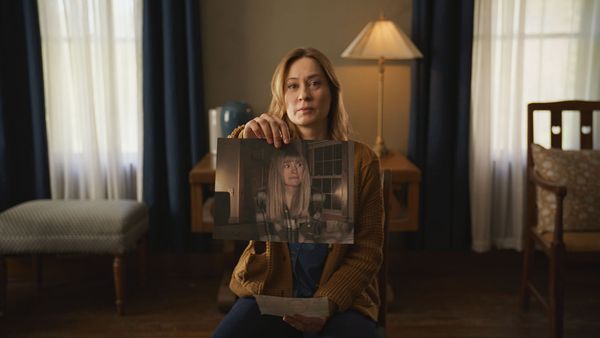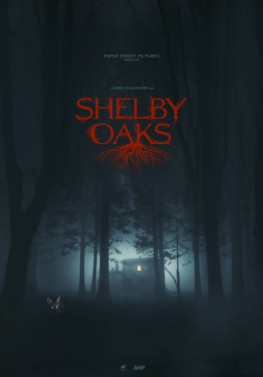Eye For Film >> Movies >> Shelby Oaks (2024) Film Review
Shelby Oaks
Reviewed by: Jennie Kermode

When, in childhood, Riley (who is played as an adult by Sarah Durn) had nightmares about a man watching her through her window, a tiny crack appeared in the glass. Later, we will see that crack again, like a thread running through Chris Stuckmann’s cleverly constructed film, connected to something we can’t yet see. When its meaning becomes clear, the impact will be devastating, and not just because of the immediate horror it relates to – because of what it suggests about the world at large.
Screened at the 2024 editions of Fantasia and Frightfest, Shelby Oaks has impressive credentials, and it more than lives up to them. There are elements of the story that horror fans will find familiar, but it’s the way they’re put together that makes it so compelling and so strong. You will need to pay attention to the details from the very start. Mia (Camille Sullivan) does so after Riley disappears, determined to find her no matter what – but then again, her story, which at times may remind you of The Vanishing, could easily be seen as a warning against obsession.
Riley always had a connection, her sister says. She seemed to sense things that other people did not. Perhaps that’s why she struggled with depression, and why she found so much fulfilment in her investigatory YouTube show, Paranormal Paranoids. What happened to the production team from that show haunted Mia for 12 years and also created a storm of social media attention which she found difficult to bear. It put pressure on her marriage, already struggling as a result of pregnancy loss. The first we see of her is in a documentary that she’s recording in the hope of finally setting the record straight, and which her husband hopes will give her closure – but something is about to happen that will shatter even the fragile peace she has found to date.
Possible patterns hidden in the grain of old tapes; the rune inguz turned on its side; an animal watching from the shadows; an old, abandoned amusement park in the town of Shelby Oaks, Darke Country, Ohio. There are times when this film seems to be laying it on thick and yet each piece of the puzzle has a reason to exist, a proper place in the big picture. Stuckmann and co-writer Sam Liz keep it all under tight control, even when the imagery suggests chaos or excess. The score by John Andrew Grush and Taylor Newton Stewart is emotive and, in places, nerve-jangling, but likewise provides a clear sense of direction, and helps to express Mia’s internal journey even in situations where viewers might feel that she has misunderstood what’s happening.
Despite the presence of these horror tropes, Shelby Oaks is successful in part because it feels very practical and down to earth. Events which might at first seem supernatural turn out to have much more grounded explanations. When we do get glimpses of the uncanny, they are not what we might expect. There is never anything gratuitous here. We see one or two gory images, but they are fleeting and their power lies in the hints they give of something much worse. Close to the end, a species of horror that is, sad to say, very much a part of the real world is revealed in brief glimpses that careful avoid sensationalism and are all the more chilling for it. Difficult subject matter is treated in a responsible way which also pays off artistically.
The visual construction of the film is also well handled. Pieces of Mia’s documentary and clips from Riley’s old videos are intercut with events in the present. Cascading online comments, still images of graffiti, and family photographs also find their place in the mix. Sometimes there’s more information coming and going on the screen than one can take in, but the important stuff should still get through, and viewers will have more to explore when they watch again – which most will definitely want to do. The creeping sense of unease that the film evokes will get under your skin and remain there long after the credits roll. “Who took Riley?” the graffiti campaigners ask, but that’s not quite the right question.
Reviewed on: 23 Aug 2024















